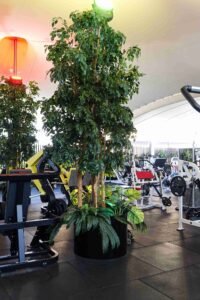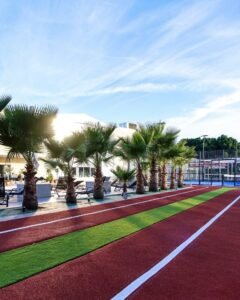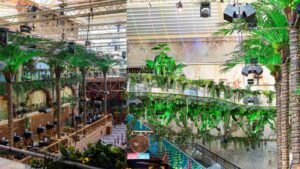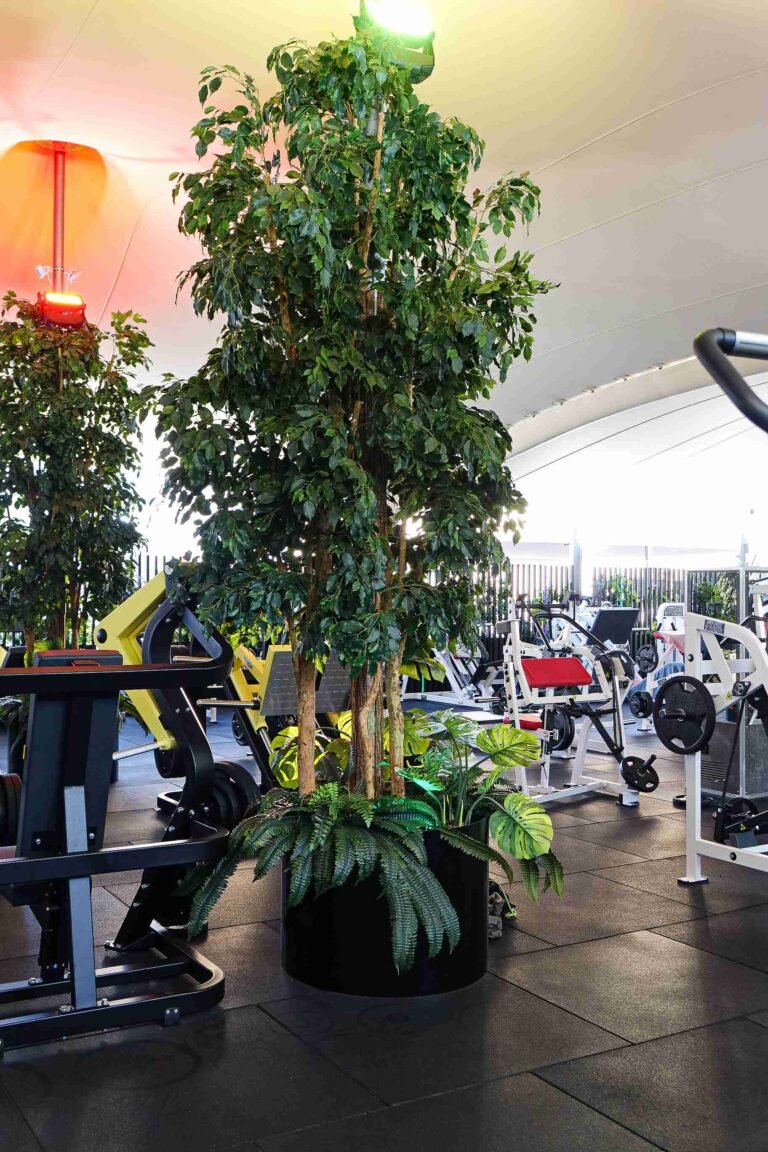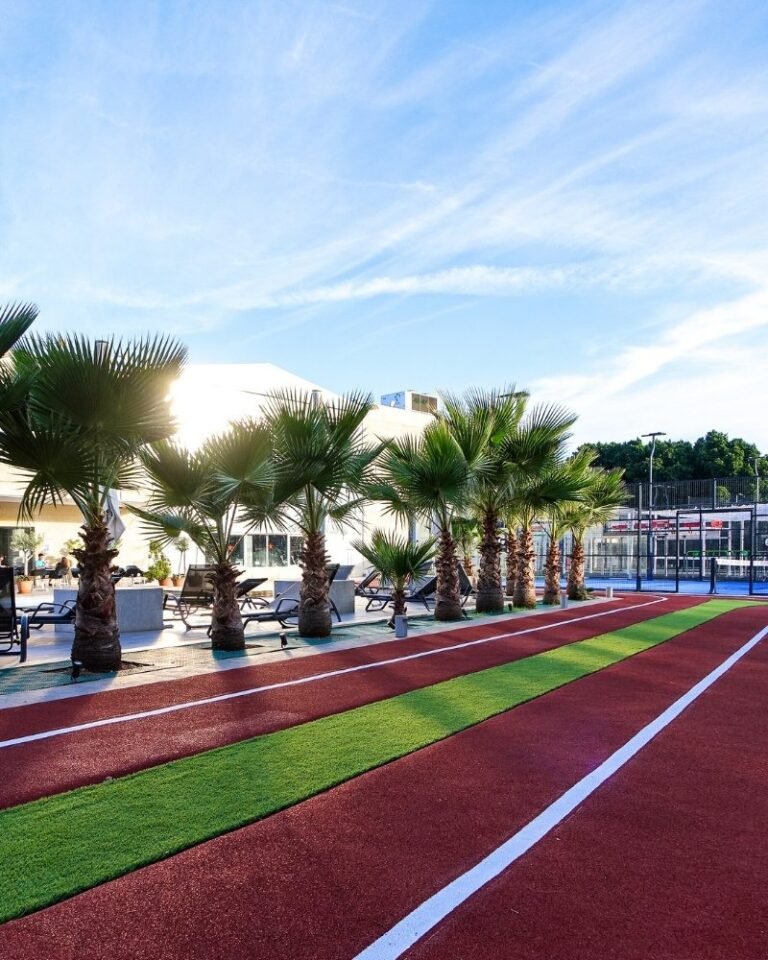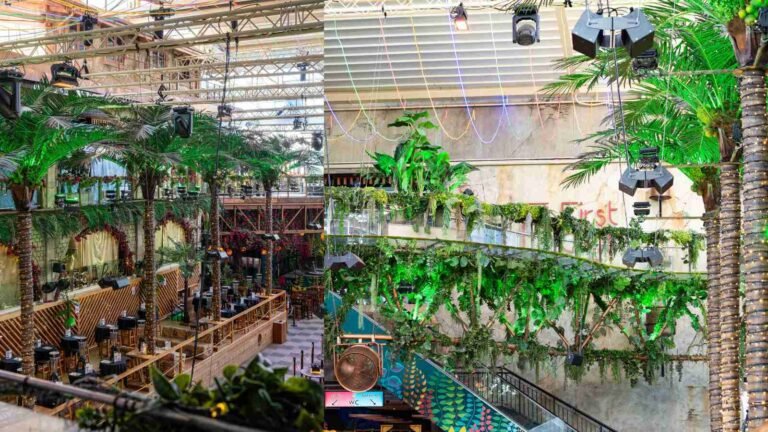Modern artificial trees are no longer just decorative. For commercial clients seeking realistic greenery with minimal upkeep, material engineering and product structure now define performance.
This article analyzes how high-quality artificial trees can maintain structural integrity and visual realism for years—with almost zero maintenance—while avoiding common failures like leaf loss, deformation, and instability.

Material Engineering: What Makes a Tree Truly “Low-Maintenance”?
Low maintenance begins with smart materials—not appearance. The following table compares typical vs. high-grade materials used in artificial tree manufacturing:
| Component | Standard Grade | Professional-Grade (Recommended) |
|---|---|---|
| Leaves | PVC film, hand-glued | Injection-molded PE + UV matte coating |
| Trunks | Resin shell, hollow plastic core | Solid fiberglass / steel skeleton inside PE |
| Branches | Foam-wrapped wire | Anti-bend alloy + natural bark texture coating |
| Base System | Lightweight pot with filler | Weighted steel plate / bolt-in base |
| Surface Finish | Glossy or artificial shine | Matte, dust-resistant, anti-fade surface |
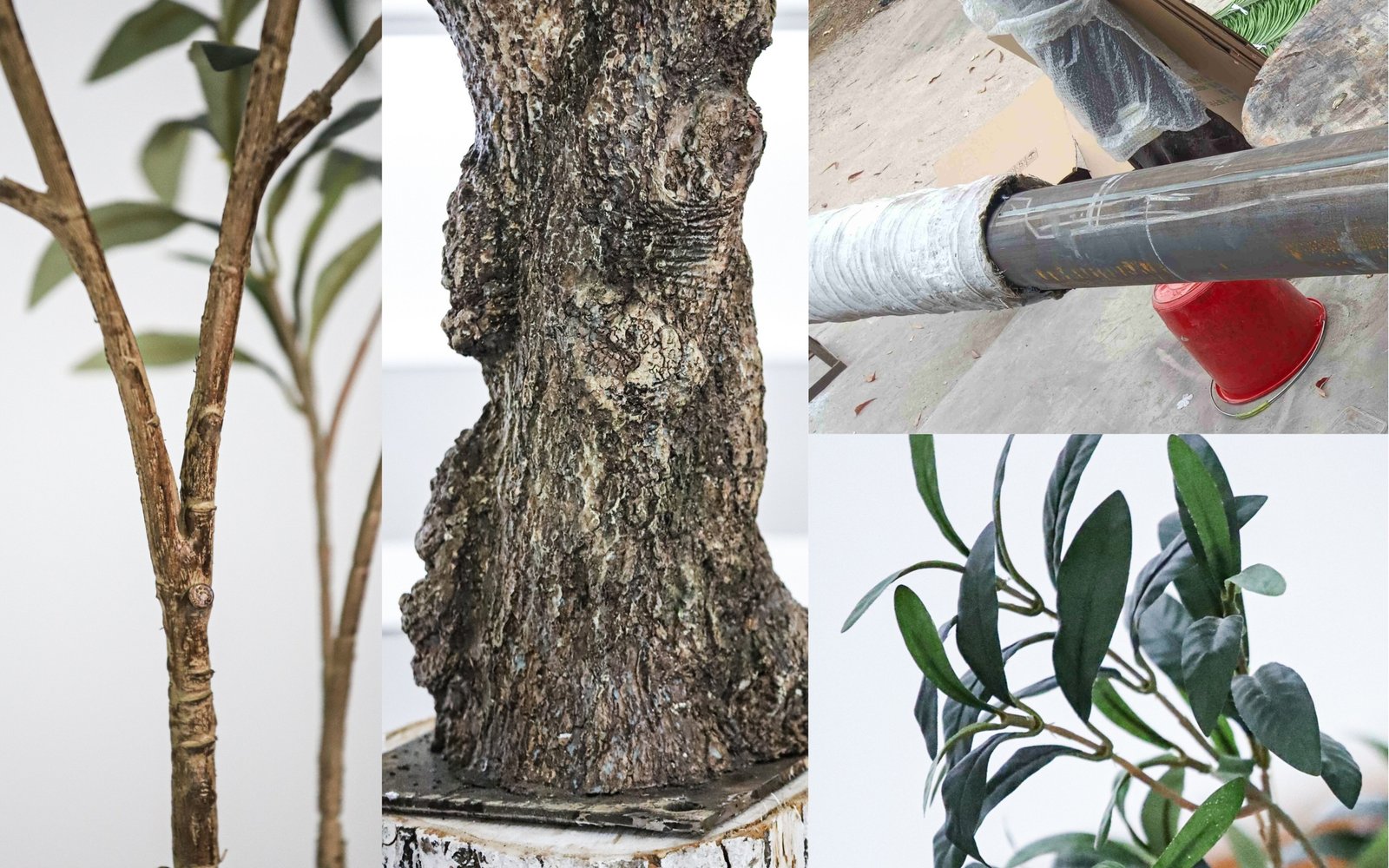
Structural Design: How to Avoid Leaf Loss and Deformation
Most leaf loss occurs due to friction, gravity, or weak adhesives. Professional-grade trees now use mechanical insertion or injection-mounted foliage that ensures zero drop-off under shaking or wind.
Key Structural Features:
- Steel trunk + reinforced branch sockets
- Injection-molded leaf attachment instead of glued leaves
- Flexible joints to absorb impact and prevent breakage
- UV & anti-crack coating for outdoor installations
📊 Technical Illustration Suggestion:
A cutaway diagram showing internal steel trunk, branch angles, leaf sockets, and base structure.
Indoor vs. Outdoor Adaptation: Customization by Application
Indoor Use:
- Slender profile, smaller foliage
- Lightweight base with anti-slip pad
- Flame-retardant materials preferred (IFR rated)
Outdoor Use:
- UV-blocking foliage with matte finish
- Rust-resistant internal core (fiberglass/steel)
- Weighted or bolt-fixed base to prevent tipping
- Drainage-ready planters or integrated ground anchors
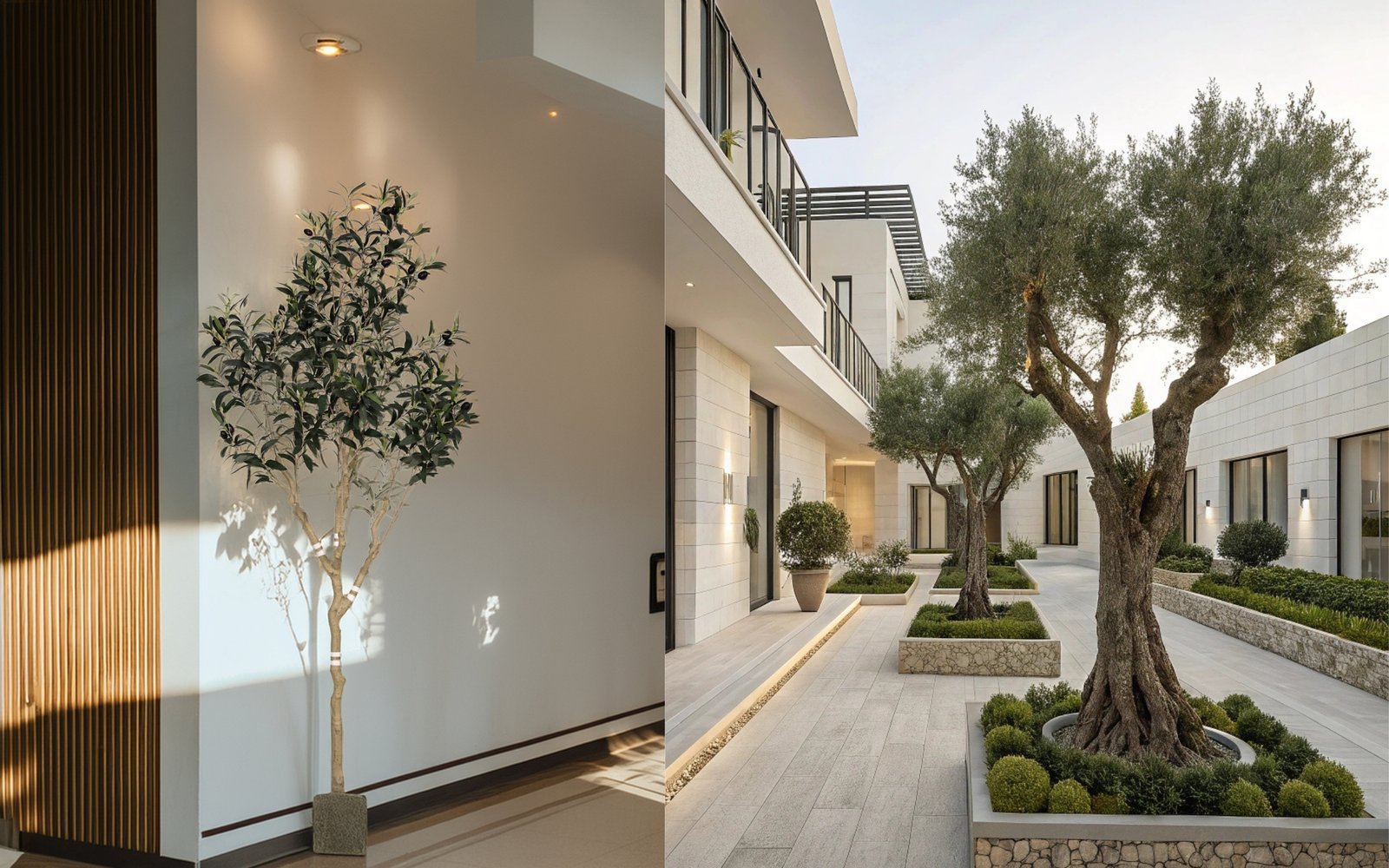
Maintenance Protocol: What “Low Maintenance” Really Means
Truly low-maintenance trees should not require weekly care. Below is a typical maintenance schedule for a commercial-grade installation:
| Task | Frequency | Tool / Method |
|---|---|---|
| Surface Dust Removal | Monthly | Soft blower or microfiber cloth |
| Leaf Check | Quarterly | Visual + gentle tug test |
| Base Stability Check | Every 6 months | Manual test + tighten if needed |
| UV Protection Check | Annually | Look for discoloration |
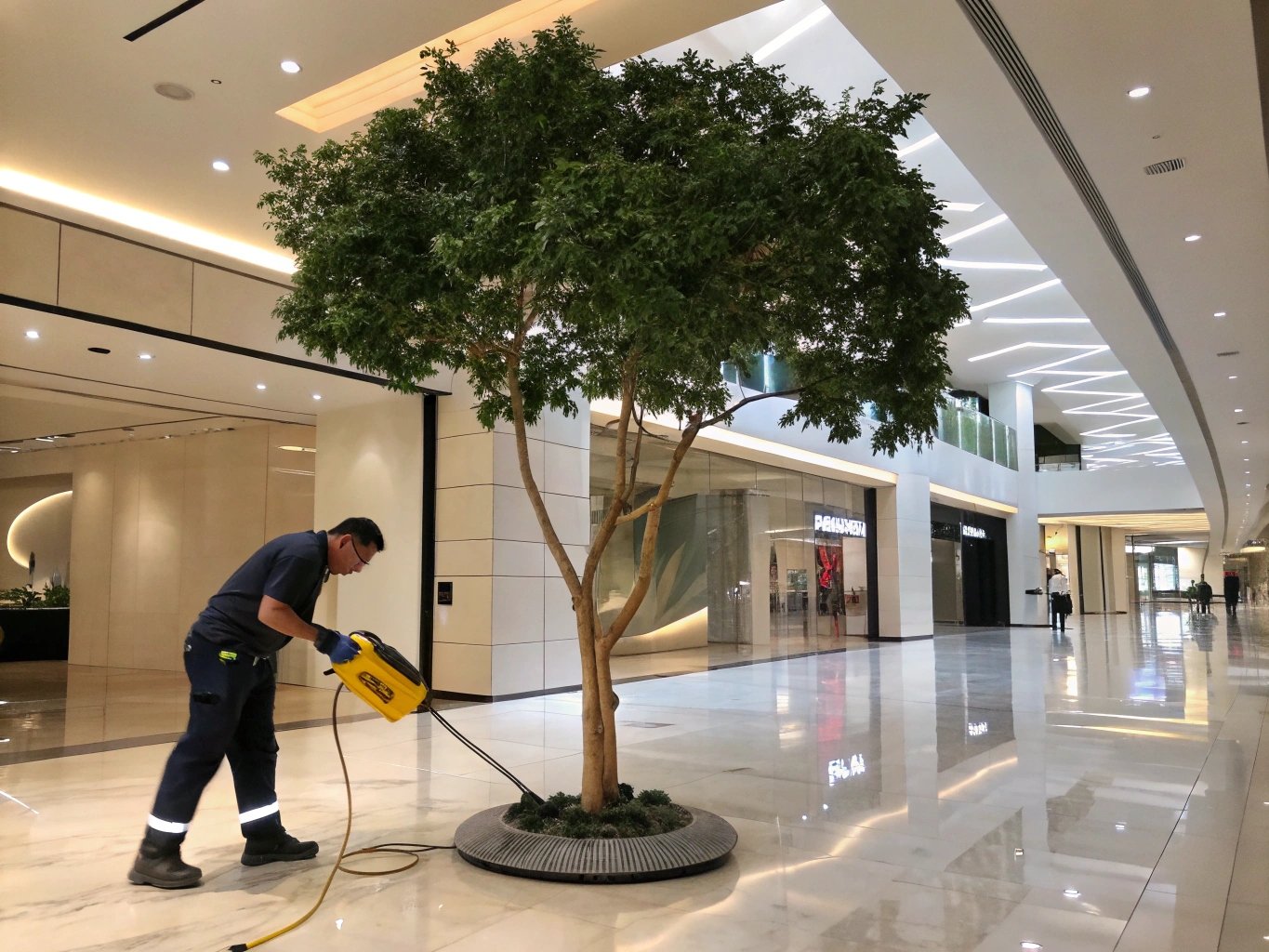
Facility staff using air blower in a shopping mall or hotel to clean tree, minimal effort scene.
Total Cost of Ownership (TCO): Long-Term Value Breakdown
While premium artificial trees have higher upfront costs, they offer lower total cost of ownership when compared to live plants or low-end faux trees:
| Item | Low-End Faux Tree | Premium Faux Tree | Live Plant (Tropical) |
|---|---|---|---|
| Initial Cost (per unit) | $50–100 | $200–500 | $100–150 |
| Yearly Maintenance Labor | Low | Very Low | High |
| Replacement Cycle | 6–12 months | 5–10 years | 6–12 months |
| Water / Fertilizer Cost | – | – | $100–200 / year |
| Total 5-Year Ownership Cost | ~$300 | ~$500 | ~$1,000+ |
Conclusion: For commercial and architectural clients, high-grade artificial trees provide not just aesthetics—but long-term economic advantage.
Conclusion: Choose by Structure, Not Just Style
When choosing artificial trees for hotels, malls, restaurants, or architectural projects, evaluate them like furniture or lighting fixtures: by materials, construction, safety, and service life.
📧 Contact Oakco for customized product specs, downloadable CAD files, or full project-based BOM consultation.
📎 Request a sample kit or technical datasheet today.



